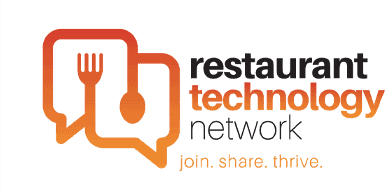There are many factors to consider when it comes to restaurant employee scheduling. It takes talent and effort to create the best plan possible for your business, employees, and customers. By using optimization processes and tools to your advantage, you can optimize your labor in ways that suit everyone’s needs, while maximizing both customer and staff satisfaction.
Use contactless technology
True labor optimization means giving your staff the tools they need to succeed at their jobs, and contactless tech is one of the most effective. Especially in the age of COVID, mobile menu browsing, contactless payment, and contactless ordering solutions can help streamline your customer’s experience and eliminate any unnecessary touchpoints between staff and customer.
Advance scheduling
Creating timetables and sending them to your staff in advance is one of the best ways to keep your schedules organized. This practice of advance scheduling allows you more time to handle emergencies while also removing some of the stress from the process of weekly scheduling.
Consistency is also an essential part of this process. Set aside a specific time every week to create your schedule so your staff knows when to expect it. Releasing your schedule consistently on the same day of each week helps establish order, allowing employees to know when they need to inform you of any potential conflicts. By maintaining a reliable scheduling timeline, there will be less stress, miscommunication, and room for error for both you and your employees.
Schedule peak times first
Peak business hours are the most critical times to have your A-team on the schedule. When the tables are full and the orders are piling up, you need your top performers in place. While it may seem easiest to plot schedules chronologically from the beginning to the end of the week, this may make creating the right balance much more challenging.
Keep track of your restaurant’s high traffic times with a simple system that identifies shifts on a scale. This can be as simple as a scale of one to five, with one being assigned to slower daytime shifts and five being the fast-paced night service.
Once you’ve rated your shifts, it’s easier to identify and fill spaces from the busiest hours to the slowest. Scheduling for your peak times first and then filling in the rest of the schedule ensures that your most skilled and efficient employees are placed where they’re needed without having to backtrack and continually make changes.
Balance
While it is important to have your heavy hitters in place for your busiest shifts, it’s also essential to keep your schedules as balanced as possible. All employees must have the opportunity to spend at least some time working a variety of shifts. Not only does this allow servers to earn more in tips than they would by consistently working low-traffic slots, but it also allows everyone to gain experience in juggling the demands of peak shifts. This increase in battle-tested staff will, in turn, make for a deeper bench when scheduling those peak times in the future.
Time to recharge
One of the most important considerations when creating your schedule is the spacing of shifts for each employee. Back-to-back shifts should be avoided if possible, whether they be two shifts in the middle of the day or stacked closing and opening shifts. Allowing staff the time to recharge between shifts not only lifts morale and reduces fatigue, but it also improves overall performance.
POS
Among those looking for a new POS in the restaurant industry, 76% list labor management as a top factor in their decision. The right POS platform can be a significant aid in workforce management, automating many aspects of the employee management process. POS terminals can serve the functionality of a time clock to ensure accurate tracking of time on the job and help maintain appropriate staffing levels during high and low-traffic periods.
Among other labor-related benefits of a good POS is the automated generation of payroll reports along with the restriction of access to sensitive controls such as discounts, voids, and refunds. These capabilities and restrictions can help you maintain increased security within your sales systems by tying transactions to specific employees, not only decreasing the chances of theft but also reducing the risk of employees giving unauthorized discounts to friends or family.
The automation afforded by a good POS can make the sometimes daunting process of labor optimization much less of a chore. The result is increased efficiency, improved employee morale, and more time for you to handle the many other management issues clamoring for your attention every day.
Optimizing your restaurant’s labor force will continue to be critical even after the pandemic ends, as customers have come to expect certain conveniences—curbside pickup and delivery, for example. To learn more about how contactless tech can improve your business, schedule a OneDine demo today!





